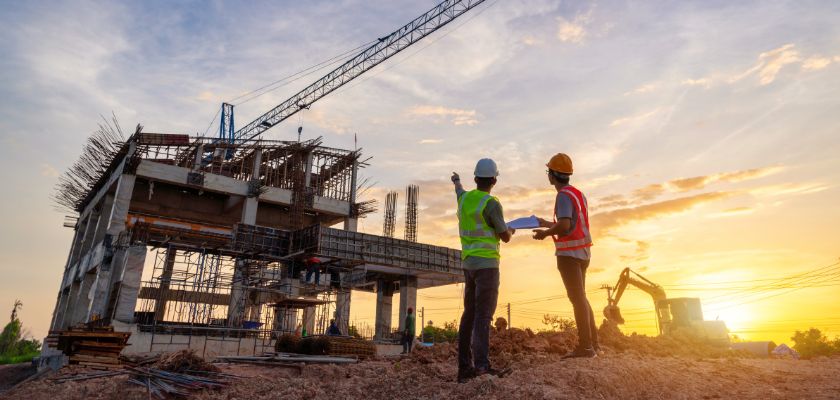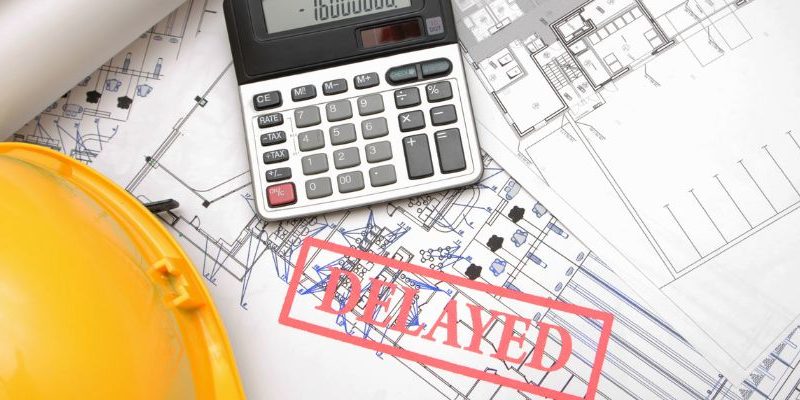Construction delays are one of the most common challenges faced by project managers in the industry. Whether due to unforeseen weather conditions, supply chain disruptions, or miscommunication among stakeholders, delays can significantly impact project timelines, budgets, and client satisfaction. However, with careful planning and effective management, these delays can be minimized or even avoided. This article will explore strategies for managing construction delays, with a focus on avoiding project management mistakes and ensuring the success of high-end projects like those undertaken by Pristine Luxury Remodeling.
Understanding the Causes of Construction Delays

Before diving into strategies for managing construction delays, it’s essential to understand the common causes that lead to these setbacks. By identifying these factors early, project managers can take proactive measures to keep their projects on track.
Poor Planning and Scheduling
One of the most significant project management mistakes is inadequate planning and scheduling. Without a detailed project plan, it’s easy to overlook critical tasks, leading to delays. Poor scheduling can also result in resource shortages, where labor or materials are not available when needed, further delaying the project.
At Pristine Luxury Remodeling, the importance of meticulous planning cannot be overstated. By investing time upfront to create a comprehensive project schedule, including buffer periods for potential delays, project managers can significantly reduce the risk of disruptions.
Unforeseen Circumstances
Unforeseen circumstances, such as extreme weather conditions, supply chain issues, or unexpected site conditions, can cause significant delays in construction projects. While these factors are often beyond the control of project managers, their impact can be mitigated through contingency planning and flexibility.
For luxury remodeling projects, where custom materials and high-end finishes are often required, unexpected delays in material delivery can pose a substantial risk. Pristine Luxury Remodeling addresses this by maintaining strong relationships with suppliers and having alternative options readily available.
Miscommunication Among Stakeholders
Effective communication is crucial for the success of any construction project. Miscommunication between project managers, contractors, clients, and other stakeholders can lead to misunderstandings, mistakes, and ultimately, delays. This is another common project management mistake that can be avoided with the right strategies.
Clear and consistent communication is especially important in luxury remodeling projects, where clients often have specific and detailed requirements. Pristine Luxury Remodeling ensures that all stakeholders are kept informed and aligned through regular updates, meetings, and clear documentation.
Strategies for Preventing and Managing Construction Delays

While some delays are inevitable, there are several strategies that project managers can implement to prevent and manage delays effectively. These strategies focus on improving planning, communication, and flexibility within the project.
Comprehensive Project Planning
A well-thought-out project plan is the foundation of any successful construction project. This includes not only the project timeline but also detailed task breakdowns, resource allocation, and contingency plans for potential delays.
- Task Breakdown and Prioritization: Breaking down the project into smaller, manageable tasks allows for better tracking of progress and early identification of potential delays. Prioritizing tasks based on their impact on the overall timeline can help ensure that critical tasks are completed on time.
- Resource Planning: Ensuring that all necessary resources, including labor, materials, and equipment, are available when needed is crucial. This requires accurate forecasting and coordination with suppliers and subcontractors.
- Contingency Planning: Building buffer periods into the project schedule for unforeseen delays is essential. Additionally, having contingency plans for key resources, such as alternative suppliers, can help mitigate the impact of delays.
At Pristine Luxury Remodeling, comprehensive project planning is a standard practice. By anticipating potential challenges and planning accordingly, they can keep their projects on track and deliver exceptional results.
Effective Communication and Coordination
Communication is key to preventing misunderstandings and ensuring that all stakeholders are aligned throughout the project. This involves regular updates, clear documentation, and efficient coordination between all parties involved.
- Regular Updates and Meetings: Scheduling regular progress meetings with all stakeholders helps ensure that everyone is on the same page and that any issues are addressed promptly. This also allows for adjustments to the schedule if necessary.
- Clear Documentation: Documenting all agreements, changes, and updates in writing helps prevent miscommunication and provides a reference point for all stakeholders. This is especially important in luxury remodeling projects, where details matter.
- Coordination with Subcontractors: Coordinating with subcontractors and ensuring they are aware of the project timeline and requirements is crucial. This helps prevent delays caused by misalignment or lack of preparation.
Pristine Luxury Remodeling excels in communication and coordination, ensuring that all parties are informed and working towards the same goals. This proactive approach helps them avoid common project management mistakes and keep their projects on schedule.
Flexibility and Adaptability
Flexibility and adaptability are essential qualities for project managers, especially when dealing with luxury remodeling projects that often involve custom work and unique challenges. Being able to adjust plans and schedules in response to unforeseen circumstances can make the difference between a minor delay and a significant disruption.
- Adjusting the Schedule: When unexpected delays occur, it’s important to be able to adjust the project schedule without compromising the overall timeline. This may involve reallocating resources or resequencing tasks to keep the project moving forward.
- Alternative Solutions: Having alternative solutions ready for potential issues, such as backup suppliers or alternative materials, can help minimize the impact of delays. This proactive approach ensures that the project can continue even when challenges arise.
- Continuous Monitoring and Improvement: Continuously monitoring the project’s progress and making adjustments as needed is crucial for staying on track. This also involves learning from past experiences and applying those lessons to future projects.
At Pristine Luxury Remodeling, flexibility and adaptability are part of their project management approach. By remaining responsive to challenges and open to alternative solutions, they can ensure that their projects are completed on time and to the highest standards.
Learning from Past Experiences
One of the most effective ways to prevent future construction delays is to learn from past experiences. By analyzing previous projects and identifying the project management mistakes that led to delays, project managers can implement improvements and avoid repeating the same errors.
Post-Project Reviews
Conducting post-project reviews is an essential practice for continuous improvement. These reviews should involve all stakeholders and focus on identifying what went well and what could be improved.
- Identifying Delays and Causes: Reviewing the project timeline and identifying any delays that occurred, along with their causes, is the first step in learning from past experiences. Understanding the root causes of delays allows for targeted improvements.
- Implementing Lessons Learned: Applying the lessons learned from previous projects to future ones is key to preventing similar delays. This may involve updating processes, improving communication, or refining planning techniques.
- Sharing Knowledge: Sharing the insights gained from post-project reviews with the entire team ensures that everyone is aware of the improvements and can contribute to better project outcomes in the future.
Pristine Luxury Remodeling consistently conducts post-project reviews to learn from their experiences and enhance their project management practices. This commitment to continuous improvement allows them to deliver outstanding results while minimizing delays.
Continuous Improvement in Project Management
Continuous improvement is a fundamental principle of effective project management. By regularly evaluating and refining processes, project managers can stay ahead of potential challenges and ensure that their projects are completed on time.
- Refining Planning Processes: Continuously improving the planning process by incorporating new techniques, tools, and lessons learned from previous projects helps create more accurate and reliable project schedules.
- Enhancing Communication Tools: Leveraging technology to improve communication and collaboration among stakeholders can help prevent misunderstandings and ensure that everyone is aligned throughout the project.
- Staying Informed on Industry Trends: Staying informed about industry trends, new materials, and best practices allows project managers to incorporate the latest innovations into their projects, further reducing the risk of delays.
At Pristine Luxury Remodeling, continuous improvement is an integral part of their project management approach. By staying informed and consistently refining their processes, they can deliver high-quality results on time and within budget.
Final Wording
Managing construction delays requires a combination of careful planning, effective communication, flexibility, and a commitment to continuous improvement. By avoiding common project management mistakes and implementing the strategies outlined in this article, project managers can significantly reduce the risk of delays and ensure the success of their projects. For high-end projects like those undertaken by Pristine Luxury Remodeling, these practices are essential for delivering exceptional results that meet clients’ expectations. Whether you’re managing a luxury remodeling project or any other type of construction, staying on schedule is key to achieving success.
FAQ’s
1. What are the most common causes of construction delays?
Construction delays can be caused by several factors, including poor planning, unforeseen circumstances like weather or supply chain issues, and miscommunication among stakeholders. Addressing these issues early can help keep your project on schedule.
2. How can poor planning lead to construction delays?
Poor planning is one of the most significant project management mistakes that can lead to delays. Without a detailed and realistic project plan, critical tasks may be overlooked, resources may be unavailable when needed, and timelines can easily slip.
3. What strategies can help prevent delays in luxury remodeling projects?
In luxury remodeling projects, like those managed by Pristine Luxury Remodeling, effective strategies include comprehensive planning, clear communication with all stakeholders, and maintaining flexibility to adjust to unforeseen challenges.
4. How does miscommunication contribute to project delays?
Miscommunication among project managers, contractors, and clients can lead to misunderstandings, mistakes, and delays. Clear and consistent communication, regular updates, and thorough documentation are essential to avoid these issues.
5. Why is flexibility important in managing construction projects?
Flexibility allows project managers to adapt to unexpected changes, such as delays in material delivery or weather-related disruptions. Being able to adjust the schedule and find alternative solutions helps keep the project moving forward.







